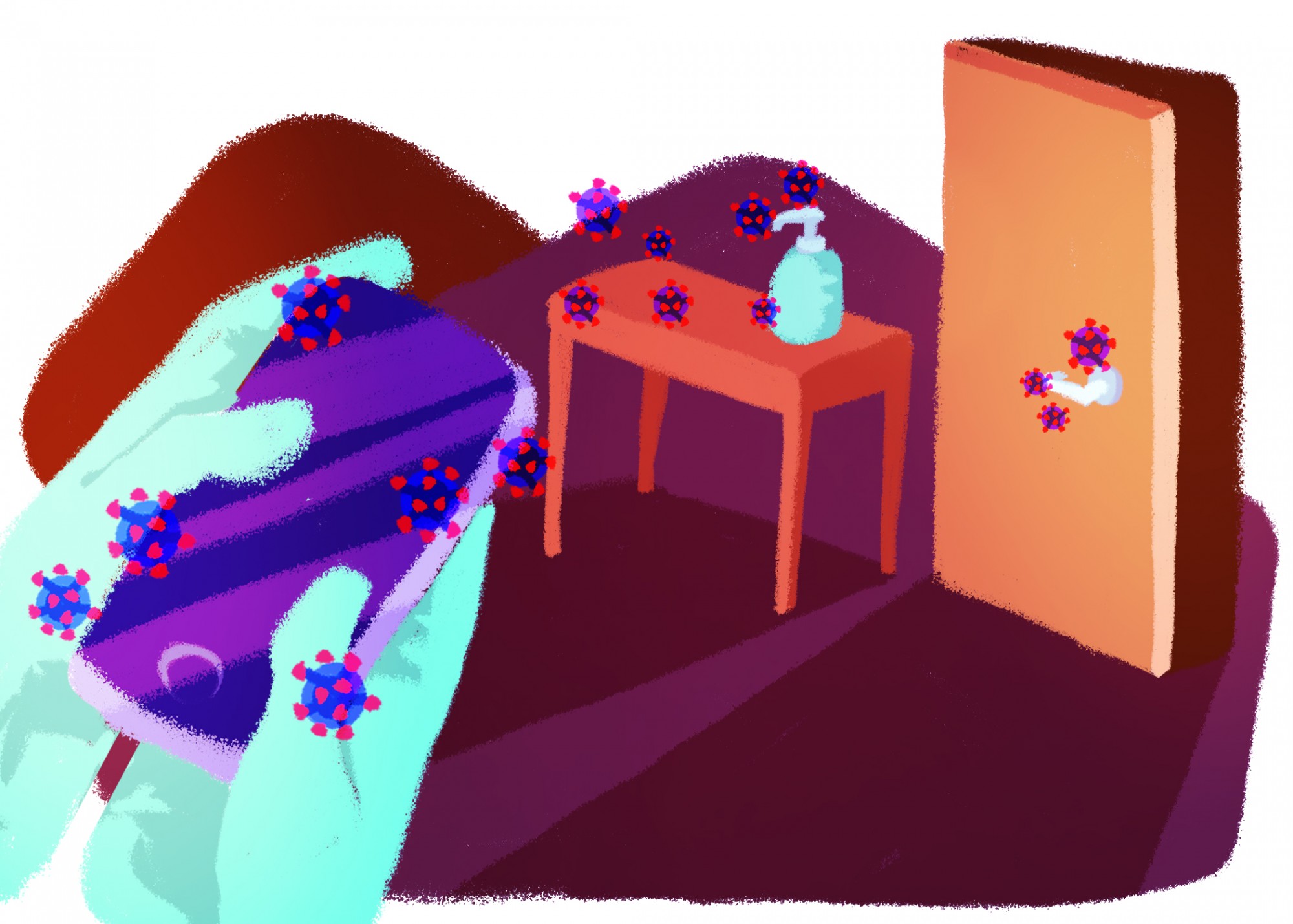University of Minnesota researchers found that humidity may affect COVID-19’s ability to survive on surfaces.
Researchers at the St. Anthony Falls Laboratory simulated the droplets that come out of a person’s mouth when they speak or breathe using a nebulizer, a medical device used to change a liquid into a mist. The droplets were placed on five different surfaces, including plastic, steel, copper and two different types of glass. The researchers did not have access to the virus and instead used an alternative substance for the study.
Researchers initially were trying to determine how long it would take for the droplets to evaporate.
“We put droplets on a surface, and so we were expecting the droplet to disappear after a short period of time through evaporation,” said Jiarong Hong, a researcher and University associate professor in the Department of Mechanical Engineering. “But what we found is quite interesting under the microscope — we observed this droplet did not disappear, and it formed residues.”
The residue, which is only a few micrometers in size, is where viruses like SARS-CoV-2 or the flu can remain on surfaces. The leftover residue once the droplet has evaporated can insulate the virus and protect it from environmental changes.
“What is interesting is actually we found on different types of surfaces that the residue forms in different ways. On some surfaces, there were no residues,” he said.
Even when it was humid, residues did not form on copper surfaces, the researchers found. On plastic and glass, however, the residues formed and could last for days.
The researchers ran several different tests because at first they did not see the residue because the humidity level affected its ability to form.
“When the humidity level goes below 10%, none of these surfaces can form residuals,” Hong said.
During summer when humidity typically rises, the droplets may survive longer, said Santosh Kumar Sankar, a researcher and University Ph.D. candidate in the Department of Mechanical Engineering.
Researchers said they would like other researchers with access to SARS-CoV-2 to replicate the study, which is still subject to peer review and will require more work to confirm the findings.
This study came after a similar one from March that first examined how SARS-CoV-2 survived on different surfaces. The study, from researchers at the National Institute of Allergy and Infectious Diseases in Hamilton, Montana, among others, found the virus could remain on some surfaces for up to 72 hours.
The University researchers were interested in figuring out why this occurred because the original study never addressed that question, Kumar said.
“It’s always better to be aware of potential contacts and reinforce the need for more frequent hand washing and wearing masks because the only way you get to these droplets on the surface is you emit them from your mouth. Wearing masks is the best way right now to limit the spread,” he said.














